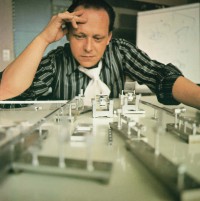Gerhard Schubert GmbH
Gerhard Schubert GmbH celebrates 50th anniversary
Founded in 1966, the Gerhard Schubert company is acknowledged today as a market leader for digital packaging machinery. Now in its second generation, the company has some 1,100 employees and is known for regularly surprising the market with new technologies and automation solutions.
The company founder Gerhard Schubert came up with the idea of inventing a packaging machine based on the modular principle. In 1966 he started up his company and set its first milestone: the carton erector and gluing machine that the Weiss company in Nuremberg, Germany used for packaging its gingerbread. The years that followed saw the development of the first SSB modular system packaging machine for filling and closing cartons via top loading, paving the way for the industry’s most flexible packaging machinery.
Gerhard Schubert demonstrated his pioneering spirit once again in the 1970s as he considered how to maximise flexibility in packaging processes with the help of robotics. He explains, “I wanted to develop a machine built according to human principles: simple mechanics, great intelligence and the use of tools. We proceeded to build our machinery on this basis.” In 1981 Schubert presented “Roby”, the world’s first packaging robot for packaging pralines. The breakthrough came with the development of the SNC-F2 pick-and-place robot premiered by Schubert at the 1987 interpack. At the same trade fair Schubert also presented company‘s first praline packaging line, the “Schubert Speedline”, equipped with the first Schubert robot for optical image recognition. The company ensured the necessary technical expertise for this process by establishing its own inhouse development department, a move that has since solidified the position of Gerhard Schubert GmbH as a pioneer in this segment as well. The department has gone on to set a new milestone with the recent market readiness of its 3D scanner.
Gerhard Schubert envisioned the long-term success of packaging robots primarily in the compensation of greater control resulting from the reduced mechanics they provided. Since there was nothing already on the market in the 1990s suitable for his packaging machinery construction demands, he simply developed his own controls. In 1996 the company introduced the first machine with intelligent controls to the market, the VMS. It fulfilled the prerequisites for simplified machinery structure featuring a re- duced number of mechanical components, which led to the development of today’s modular parts machinery.
Today, the seven basic modules make a flexible machinery structure possible which can combine all of the necessary functions such as feeding, erecting, filling, covering / closing, labelling, marking and palletizing. The basis of Schubert top-loading machines (TLM) today is formed by VMS control as well as two, three and four axle robots, image recognition systems and the recently introduced standard components, the “Transmodul” transport robots.
“Our aim is to combine intelligent software and reduced mechanics, and to simultaneously continue increasing flexibility,” explains Ralf Schubert, who has run the company since 2012 alongside his father Gerhard, his brother Gerald and Peter Gabriel. In line with this principle, Schubert GmbH presented the first packaging machine achieving the latest best ratings for system efficiency and availability without a control cabinet at the 2014 Interpack fair. “We continue to see ourselves as a pioneer in packaging machinery engineering, and we will go on setting new industry standards in the future. Our industry can also count on us to deliver trailblazing innovations this year,” says Gerald Schubert in summing up.
The company has again set ambitious targets for the future. By 2020 Schubert GmbH wants to increase 'the number of partial machines it manufactures annually from today‘s figure of roughly 650 up to a total of 1,000. Another Schubert priority is to shorten the company’s delivery times over the upcoming years. Ralf Schubert says, “In the future we want to construct a machine in a matter of a few hours”, a statement underscored by his supervision of the current Schubert project to develop a “digital twin”. This undertaking would allow TLM machinery to be 3D-modelled in advance. Over the next few years the delivery times will be reduced by more than half.


